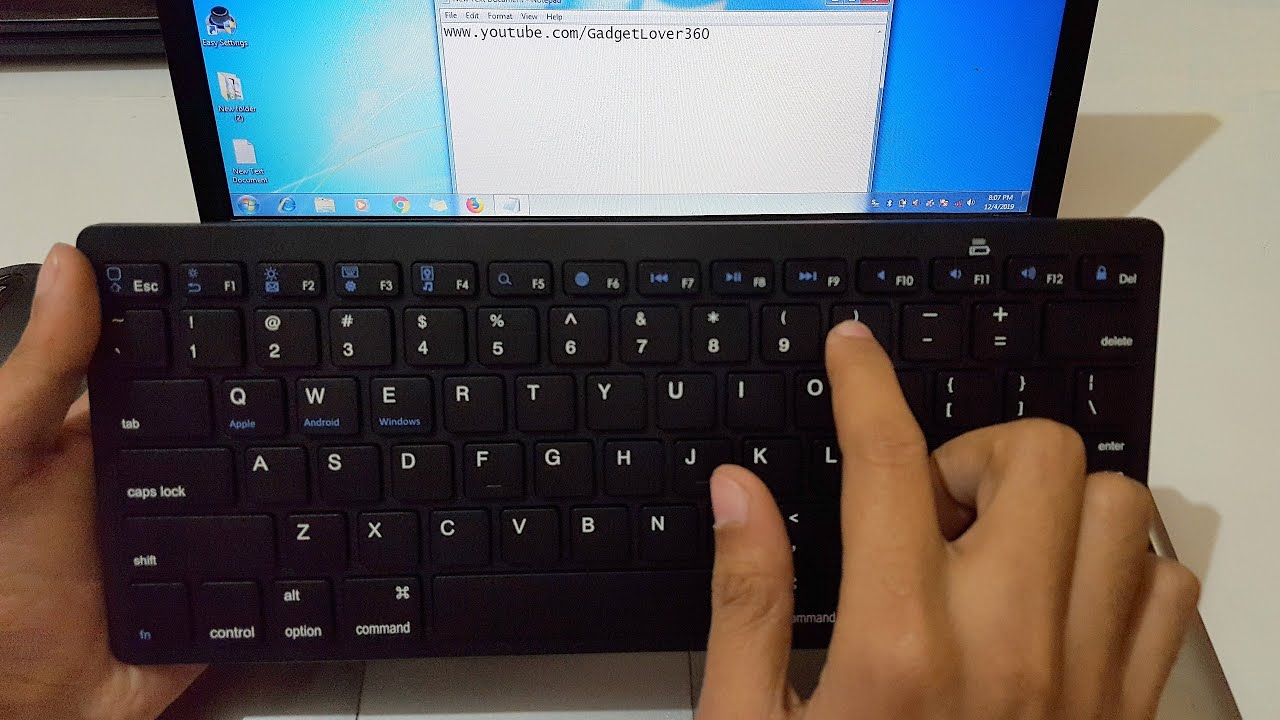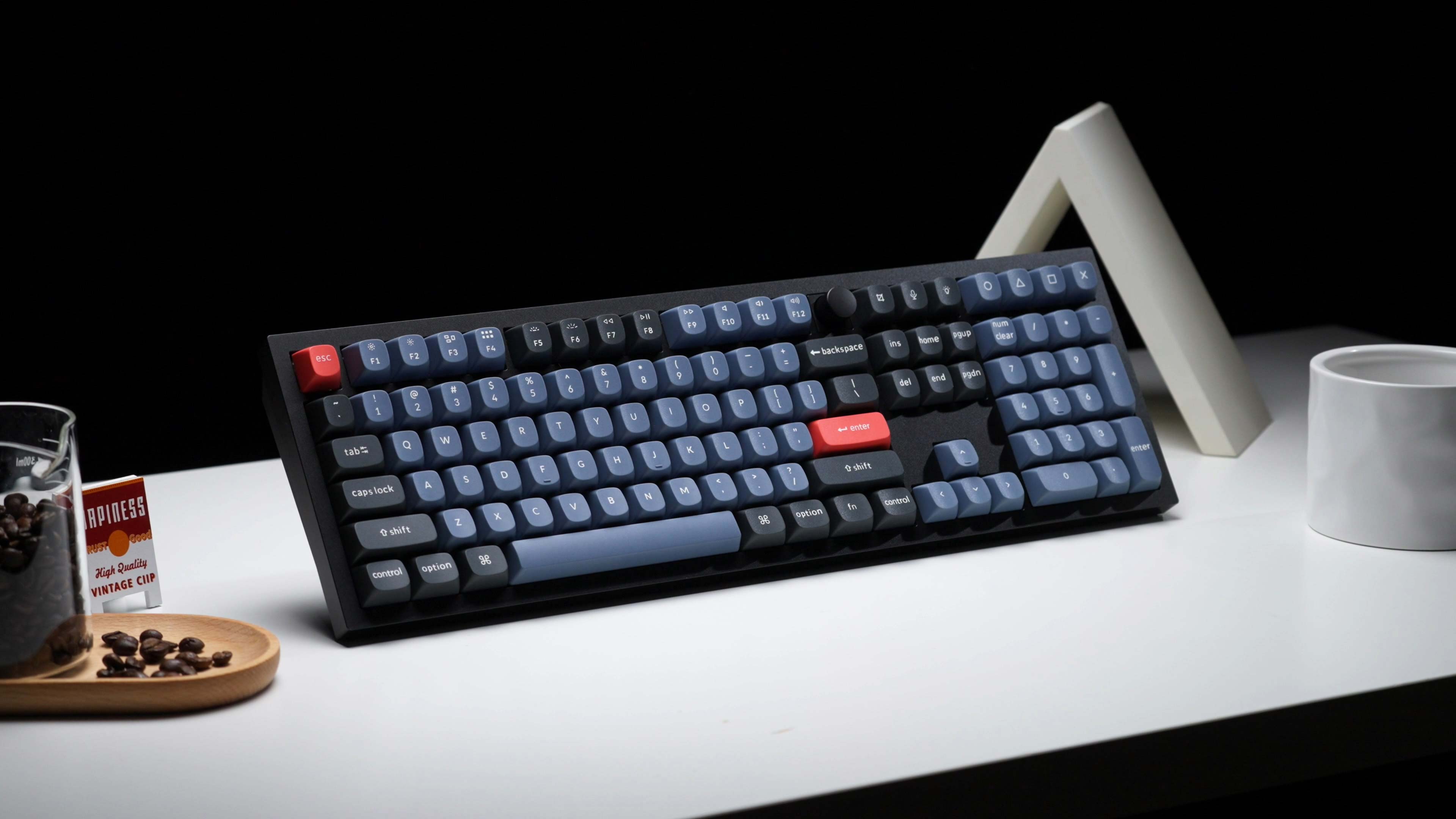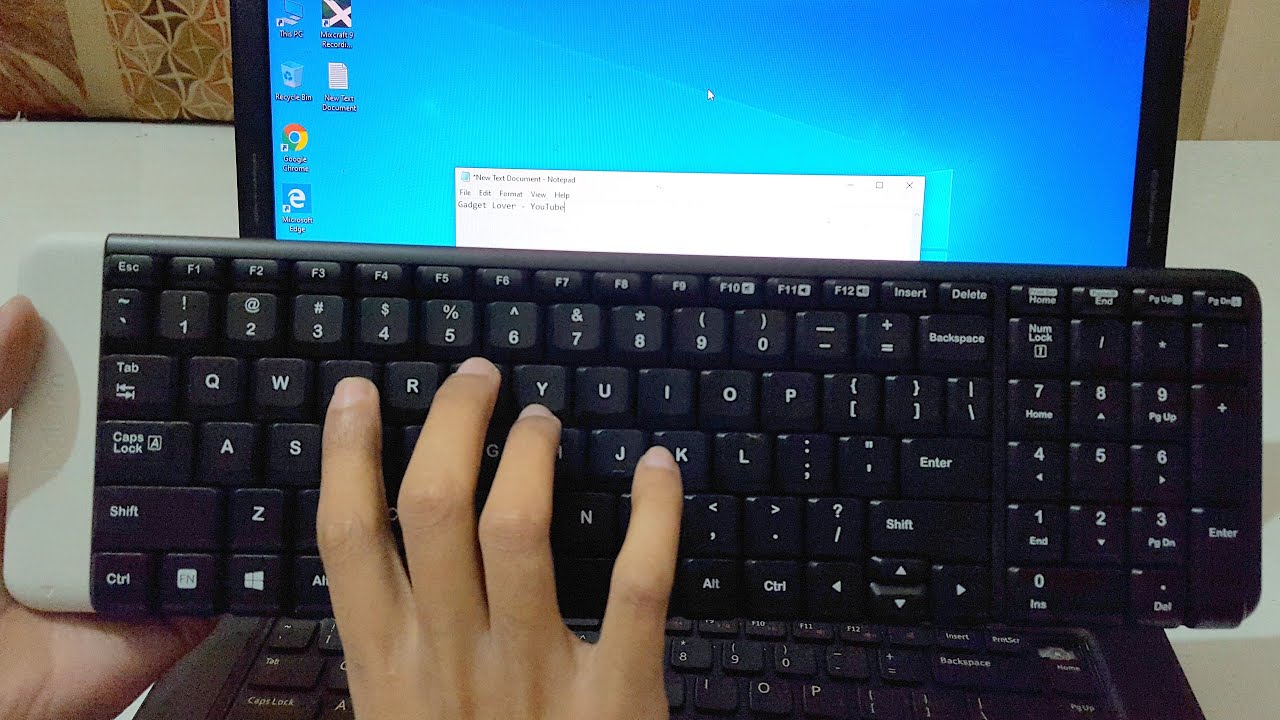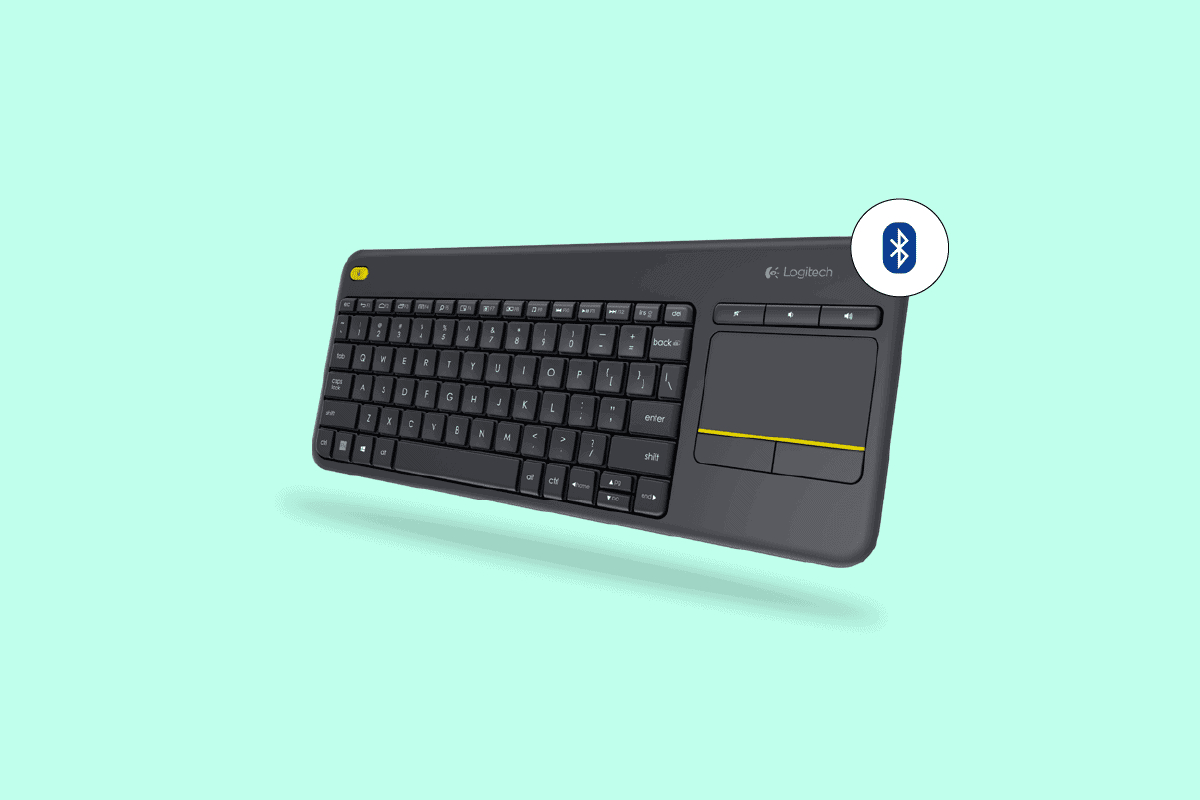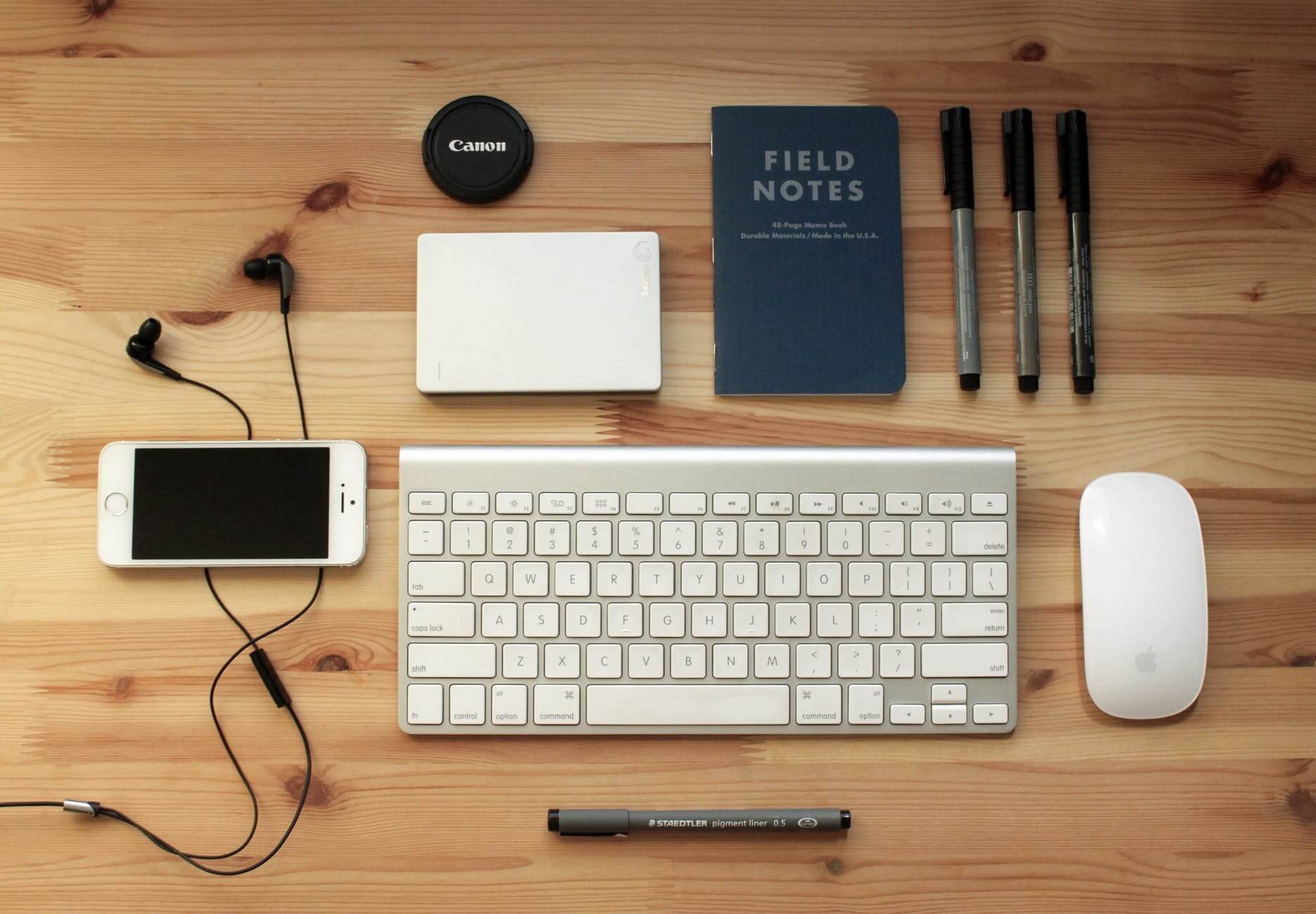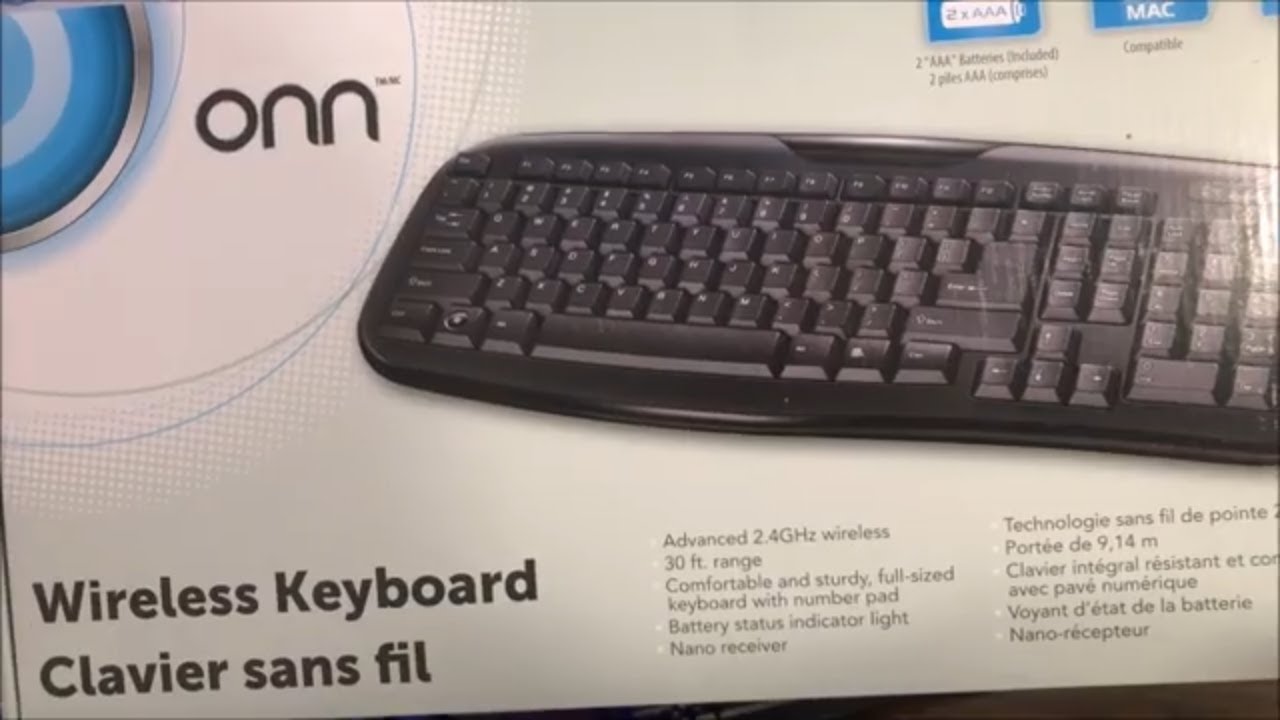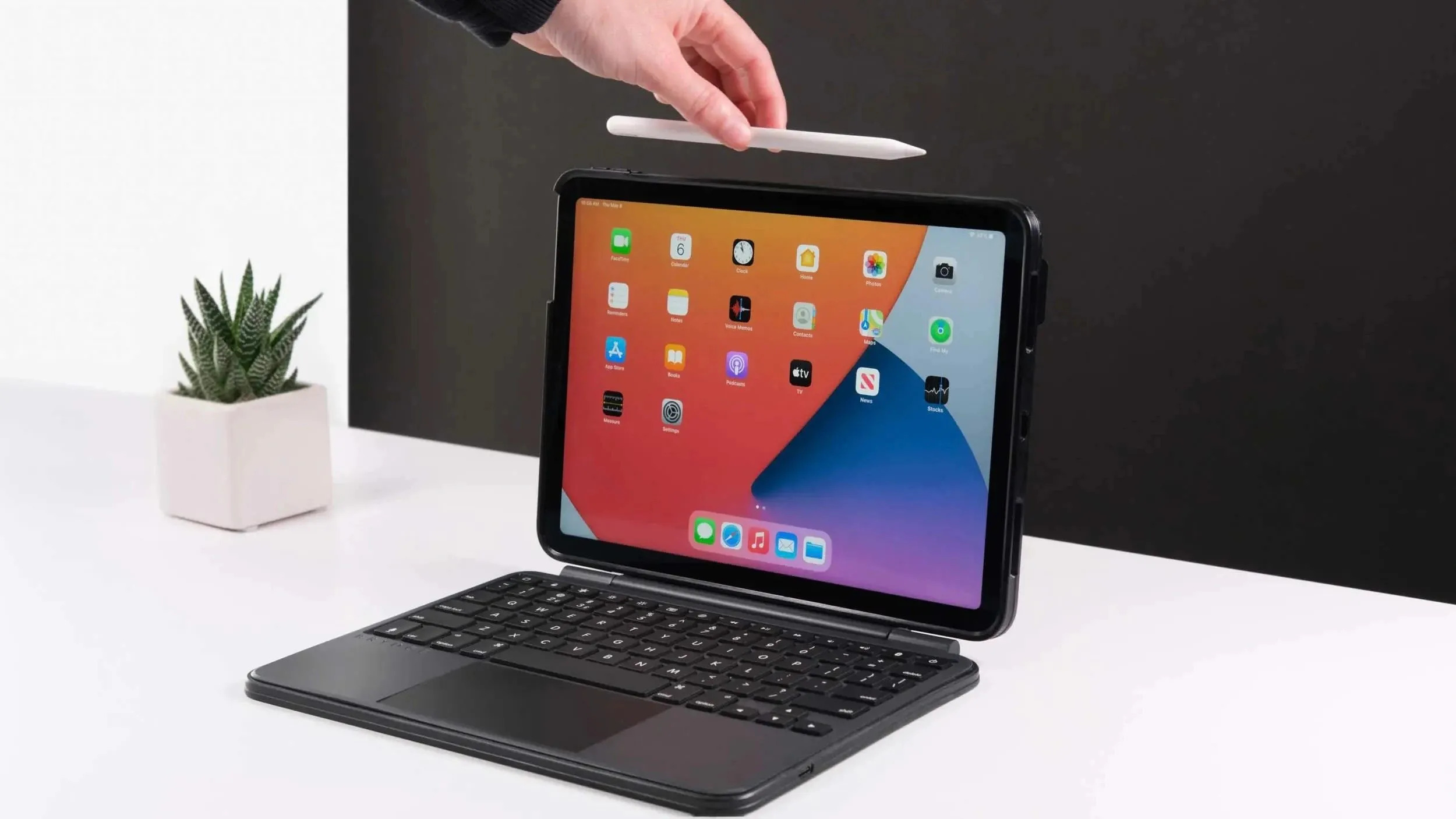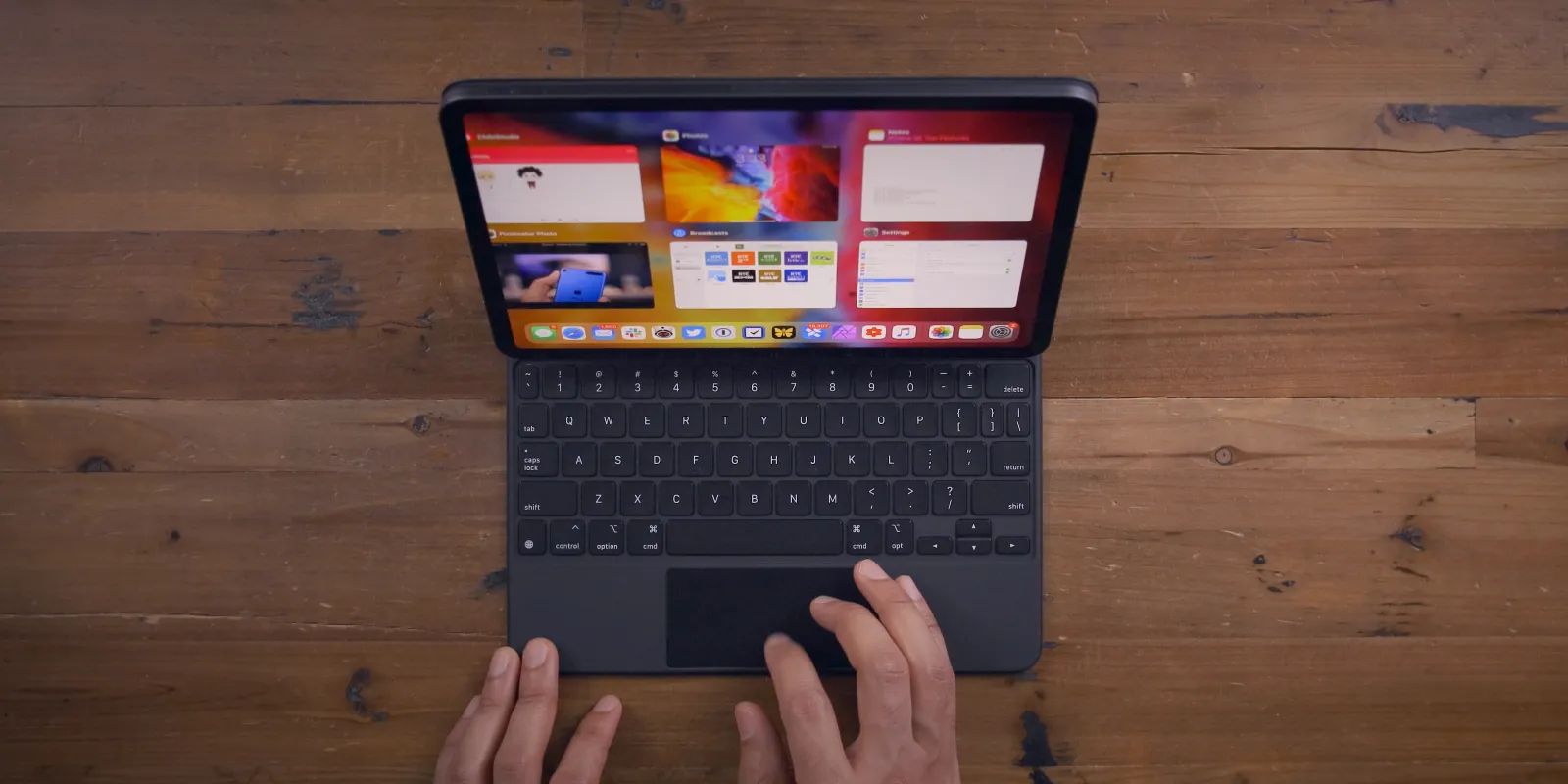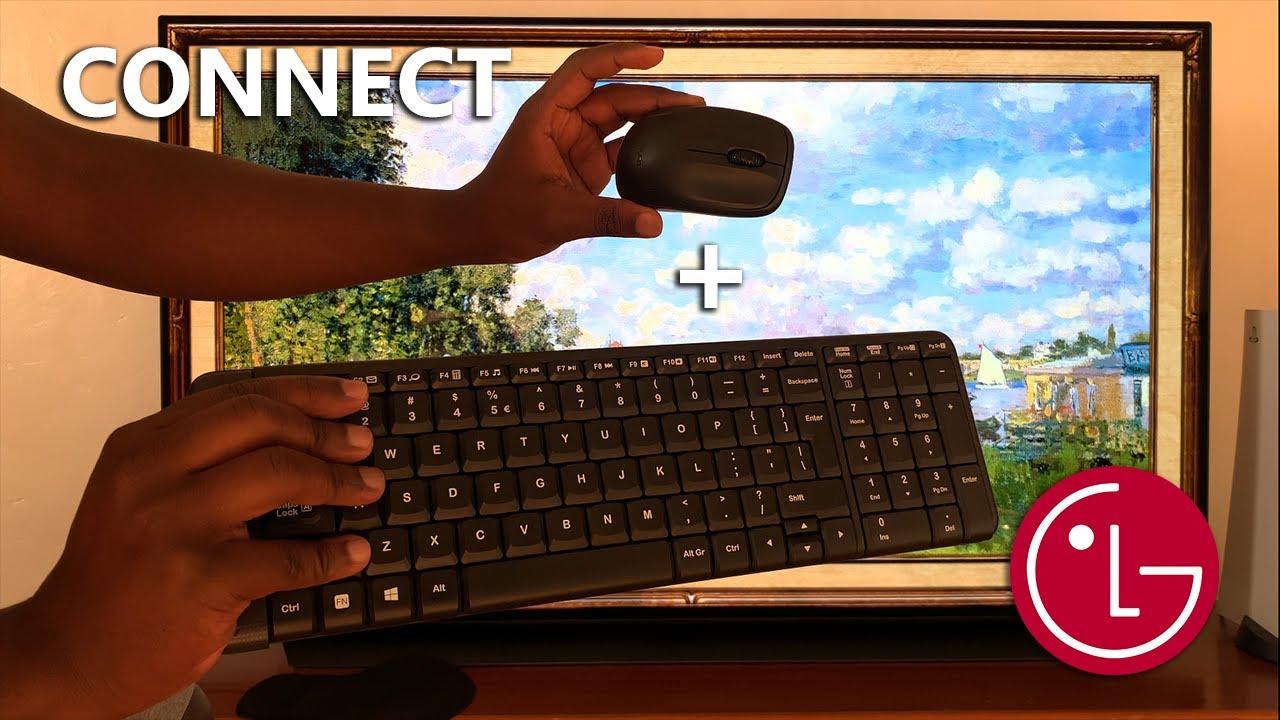What is a Bluetooth Keyboard?
A Bluetooth keyboard is a wireless input device that allows you to type and input text into a computer, tablet, or smartphone without the need for a physical connection. It uses Bluetooth technology to establish a wireless connection between the keyboard and the device, eliminating the hassle of tangled wires and providing greater flexibility and convenience.
Bluetooth keyboards come in various sizes and designs, ranging from compact keyboards that can easily fit in your bag to full-sized keyboards with numeric keypads. They can be used with a wide range of devices, including laptops, desktop computers, tablets, and smartphones, making them a versatile accessory for both work and leisure.
Unlike traditional wired keyboards, Bluetooth keyboards do not require a USB port to connect. Instead, they use radio waves to transmit data between the keyboard and the device. This wireless connection allows you to comfortably type from a distance, making it especially useful if you want to control your device while sitting back on the couch or giving a presentation.
Bluetooth keyboards are powered by batteries, typically AAA or AA, which can be easily replaced when needed. They also feature special function keys that provide shortcuts for common tasks such as adjusting volume, controlling media playback, and accessing the device’s settings. Some Bluetooth keyboards even offer additional features like backlighting, ergonomic designs, and multi-device connectivity.
Overall, Bluetooth keyboards offer convenience, flexibility, and portability. Whether you’re a student, professional, or casual user, a Bluetooth keyboard can greatly enhance your productivity and typing experience on various devices. With the freedom to move around and the ease of connection, you can say goodbye to tangled cables and enjoy a seamless typing experience wherever you go.
Benefits of Using a Bluetooth Keyboard
Using a Bluetooth keyboard brings numerous advantages and can greatly enhance your typing experience across different devices. Here are some key benefits:
1. Wireless Convenience: With a Bluetooth keyboard, you are no longer limited by cables. You can enjoy the freedom of typing from a comfortable distance without being restricted to a specific location.
2. Portability: Bluetooth keyboards are compact and lightweight, making them easy to carry around. They are a perfect companion for travelers, students, and professionals who need to work on the go.
3. Multi-Device Connectivity: Most Bluetooth keyboards allow you to connect and use them with multiple devices simultaneously. This feature enables you to switch between devices seamlessly, increasing productivity and saving time.
4. Improved Ergonomics: Many Bluetooth keyboards are designed with ergonomic features such as adjustable stands, tilted key layouts, and wrist rests. These elements help reduce strain on your wrists and promote a more comfortable typing posture.
5. Enhanced Productivity: Bluetooth keyboards often come with dedicated function keys for quick access to commonly used functions. These shortcuts can streamline your workflow and boost your overall productivity.
6. Compatibility: Bluetooth keyboards are compatible with a wide range of devices, including laptops, tablets, smartphones, and even smart TVs. This compatibility allows you to use the same keyboard with multiple devices, reducing the need for separate keyboards for each device.
7. Stylish Designs: Bluetooth keyboards come in various styles and designs, allowing you to choose one that suits your preferences. Whether you prefer a sleek and minimalist design or a bold and colorful keyboard, you can find one that matches your aesthetic.
8. Quiet and Comfortable Typing: Many Bluetooth keyboards feature low-profile keys that produce minimal noise while typing. This can be beneficial in environments where you need to work quietly, such as libraries or shared workspaces.
9. Long Battery Life: Bluetooth keyboards generally have long battery lives, allowing you to use them for extended periods before needing to recharge or replace the batteries. This saves you the hassle of frequent battery changes.
Incorporating a Bluetooth keyboard into your workflow can significantly improve your typing experience, offering convenience, comfort, and increased productivity. Its wireless capabilities, portability, and versatile compatibility make it an excellent accessory for anyone seeking a more efficient way of typing across multiple devices.
Step 1: Check Bluetooth Compatibility
Before connecting a Bluetooth keyboard to your device, it’s essential to ensure that your device supports Bluetooth connectivity. Here’s how you can check the Bluetooth compatibility:
1. Identify the Device: Determine which device you want to connect the Bluetooth keyboard to, whether it’s a laptop, desktop computer, tablet, or smartphone. Different devices may have varying Bluetooth capabilities, so it’s important to know the specific device you’re working with.
2. Check Device Specifications: Look up the specifications of your device. You can usually find this information on the manufacturer’s website or in the user manual. Look for Bluetooth compatibility information or specifications related to wireless connectivity.
3. Bluetooth Version: Check the Bluetooth version supported by your device. The most common Bluetooth versions are Bluetooth 4.0 (Bluetooth Low Energy) and Bluetooth 5.0. Newer versions offer improved speed, range, and stability, so if your device supports a newer Bluetooth version, it may provide a better connection experience.
4. Operating System Compatibility: Confirm that your device’s operating system is compatible with Bluetooth keyboards. Most modern operating systems, such as Windows, macOS, iOS, and Android, support Bluetooth connectivity. However, older operating systems may have limited or no support for Bluetooth keyboards.
5. Check Bluetooth Settings: On your device, navigate to the Bluetooth settings menu. This is usually found in the system settings or control panel. Ensure that the Bluetooth option is enabled and visible. If Bluetooth is not enabled, toggle it on.
6. Look for Bluetooth Logo: Some devices have a Bluetooth logo or indicator light that signifies Bluetooth compatibility. Check if your device has this symbol to confirm its Bluetooth capabilities.
7. Third-Party Compatibility: If you’re using a third-party Bluetooth adapter or dongle, verify its compatibility with your device. Consult the documentation or specifications provided by the manufacturer to ensure that it is compatible with your specific device and operating system.
By checking the Bluetooth compatibility of your device, you can ensure a successful connection between your Bluetooth keyboard and the device. Taking a few minutes to verify compatibility saves you time and frustration and ensures a smooth pairing process.
Step 2: Turn on Bluetooth on your Device
In order to connect your Bluetooth keyboard to your device, you need to make sure that Bluetooth is enabled. Follow these steps to turn on Bluetooth:
1. Open Bluetooth Settings: On your device, navigate to the settings menu. Look for the section related to Bluetooth settings. The location of this setting may vary depending on the device and operating system.
2. Enable Bluetooth: In the Bluetooth settings menu, toggle the switch to turn on Bluetooth. It may be labeled as “Bluetooth,” “Bluetooth On,” or represented by a switch that you can slide to the “On” position. Once enabled, your device will start searching for available Bluetooth devices.
3. Wait for Device Discovery: Give your device a moment to scan and discover nearby Bluetooth devices. This process can take a few seconds to a minute, depending on the device’s scanning capabilities and the number of devices in the vicinity.
4. Make your Device Discoverable: Some devices may have an option to make your device discoverable to other Bluetooth devices. This step is typically handled automatically, but if needed, check the Bluetooth settings for a visibility or discoverability option and ensure it is enabled.
5. Pairing Confirmation: Once your device has completed the scanning process, it will display a list of available Bluetooth devices. Locate the name or model of your Bluetooth keyboard in the list. The name of the Bluetooth keyboard is usually printed on the device or mentioned in the user manual.
6. Select and Pair: Tap or click on the name of your Bluetooth keyboard to initiate the pairing process. Your device will attempt to establish a connection with the keyboard.
7. Follow any Additional Prompts: Depending on your device, you might need to enter a passcode or confirm a pairing request to establish the connection. Follow the on-screen instructions to complete the pairing process. Some devices may use a PIN, while others may generate a pairing code that you need to enter on the keyboard.
By turning on Bluetooth on your device, you are setting the stage for the connection between your Bluetooth keyboard and your device. Once Bluetooth is enabled, you can move on to the next step and put your keyboard into pairing mode.
Step 3: Put the Keyboard in Pairing Mode
In order to connect your Bluetooth keyboard to your device, you need to put the keyboard into pairing mode. Pairing mode allows the keyboard to be discoverable by your device. Follow these steps to put your keyboard into pairing mode:
1. Consult the User Manual: Every Bluetooth keyboard has its own method of entering pairing mode. Check the user manual that came with your keyboard for specific instructions on how to activate pairing mode. The manual will typically provide step-by-step guidance or have a dedicated section for pairing instructions.
2. Check the Keyboard: Look for a dedicated pairing button or switch on the keyboard. This button is usually labeled with a Bluetooth symbol or the word “Pairing.” Press and hold this button to activate pairing mode. Some keyboards may require you to press a combination of keys, such as the “Fn” key and a specific function key, to enter pairing mode.
3. LED Indicators: On some Bluetooth keyboards, there may be LED indicators that provide visual feedback. These LEDs may flash or change color when the keyboard is in pairing mode. Refer to the user manual to understand the specific LED indicators and their meanings.
4. Bluetooth Symbol Key: For certain keyboards, you may need to press a special key with a Bluetooth symbol on it to activate pairing mode. This key is often located near the function keys at the top of the keyboard. Press and hold this key, typically in combination with the “Fn” key, to put the keyboard into pairing mode.
5. Duration of Pairing Mode: Most keyboards will enter pairing mode for a limited time, usually a few minutes. Once activated, the keyboard will remain in pairing mode long enough for your device to establish a connection. If your device fails to connect within the specified time, you may need to repeat the steps to put the keyboard back into pairing mode.
6. Follow the Keyboard’s Instructions: Read any on-screen prompts or instructions provided on your device while attempting to pair with the keyboard. Some keyboards may require additional actions or input from the user to complete the pairing process successfully.
By successfully putting your Bluetooth keyboard into pairing mode, you have made it discoverable and ready to establish a connection with your device. Now, proceed to the next step to find and connect the keyboard on your device.
Step 4: Find and Connect the Keyboard on your Device
After putting your Bluetooth keyboard in pairing mode, it’s time to search for and connect the keyboard on your device. Follow these steps to find and connect the keyboard:
1. Open Bluetooth Settings: On your device, go to the settings menu and locate the Bluetooth settings. This is typically found in the system settings or control panel. Tap or click on the Bluetooth option to open the Bluetooth settings menu.
2. Scan for Devices: In the Bluetooth settings menu, select the “Scan” or “Search” option to start scanning for available Bluetooth devices. Your device will search for nearby devices, including your Bluetooth keyboard.
3. Wait for Keyboard to Appear: Give your device a moment to complete the scanning process. As it discovers nearby Bluetooth devices, including your keyboard, the device will display a list of available devices in the Bluetooth settings menu.
4. Select the Keyboard: Look for the name or model of your Bluetooth keyboard in the list of available devices. Tap or click on the keyboard’s name to select it for connection. If the keyboard requires a passcode or pairing code, you may be prompted to enter it at this stage.
5. Initiate the Connection: After selecting the keyboard, tap or click on the “Connect” or “Pair” button to initiate the connection process. Your device will attempt to establish a connection with the Bluetooth keyboard.
6. Pairing Confirmation: Depending on your device and keyboard, you may receive a pairing request or need to enter a passcode on the keyboard to confirm the connection. Follow any on-screen instructions or prompts to complete the pairing process.
7. Connected Status: Once the connection is established, your device will show a confirmation message indicating that the Bluetooth keyboard is now connected. You should be able to use the keyboard to input text and perform other functions on your device.
8. Test the Connection: To confirm that the connection is successful, open a text document or any application that requires text input. Try typing on the Bluetooth keyboard, and ensure that the text appears on your device’s screen. If everything works as expected, then the connection is successfully established.
By finding and connecting the Bluetooth keyboard on your device, you can now enjoy the convenience of typing wirelessly. Proceed to the next step to verify the connection and ensure that your keyboard is functioning properly.
Step 5: Verify the Connection
After connecting your Bluetooth keyboard to your device, it’s important to verify the connection to ensure that it is functioning properly. Follow these steps to verify the connection:
1. Test Typing: Open a text document, messaging app, or any application that requires text input. Begin typing on your Bluetooth keyboard and check if the text appears on your device’s screen. Ensure that the keystrokes are registering correctly and that there are no significant delays between typing and text appearing on the screen.
2. Check Function Keys: Test the special function keys on your Bluetooth keyboard, such as volume controls, media playback buttons, and brightness adjustments. Verify that the function keys are performing their intended actions on your device.
3. Test Multi-Device Functionality: If your Bluetooth keyboard supports multi-device connectivity, test this feature by switching between multiple devices. Connect your keyboard to another compatible device and check if you can seamlessly switch between devices without any issues.
4. Verify Stability: Ensure that the Bluetooth connection remains stable during usage. Move around the room or change the position of your device relative to the keyboard to see if the connection remains strong and uninterrupted.
5. Check Battery Status: Verify the battery status of your Bluetooth keyboard. Some devices may display the battery level on your device’s screen when connected. If the keyboard has a dedicated battery indicator, ensure that it is displaying an appropriate battery level or check the battery status via the keyboard’s settings or companion app.
6. Reconnect if Necessary: If you encounter any issues with the connection or observe a drop in performance, disconnect and reconnect the Bluetooth keyboard on your device. This can help re-establish a stable connection and resolve any temporary connectivity issues.
7. Update Firmware: Check if there are any firmware updates available for your Bluetooth keyboard. Visit the manufacturer’s website or use their companion app to ensure that your keyboard is running the latest firmware version. Updating the firmware can address any potential bugs or improve performance.
By verifying the connection, you can ensure that your Bluetooth keyboard is properly connected and functioning as intended. If you encounter any persistent issues, refer to the troubleshooting section or consult the manufacturer’s support resources for further assistance.
Troubleshooting Common Bluetooth Keyboard Issues
While connecting and using a Bluetooth keyboard is generally a smooth and seamless process, occasionally issues may arise. Here are some common issues with Bluetooth keyboards and their possible solutions:
1. Keyboard Not Detected: If your device fails to detect the Bluetooth keyboard, try the following steps:
– Ensure that the keyboard is in pairing mode and the Bluetooth settings on your device are enabled.
– Turn off Bluetooth on your device and then turn it back on to refresh the connection.
– Restart your device to clear any temporary glitches or conflicts.
– Move the keyboard closer to your device and eliminate any potential interference from other wireless devices.
2. Intermittent Connection: If the connection between your Bluetooth keyboard and device is unstable or frequently drops, consider these solutions:
– Ensure that the keyboard and device are within the recommended Bluetooth range.
– Reduce interference by minimizing the number of wireless devices operating nearby.
– Check for physical obstructions that may block the Bluetooth signal.
– Replace or recharge the batteries in your Bluetooth keyboard if they are running low.
– Update the firmware of the Bluetooth keyboard to the latest version, if available.
3. Delayed Input: If there is a noticeable delay between pressing a key on your Bluetooth keyboard and seeing the corresponding text on the device’s screen, try the following:
– Verify that there is no significant system or application lag impacting the keyboard input.
– Move closer to the device to maximize the Bluetooth signal strength.
– Ensure that the batteries in your Bluetooth keyboard have enough power.
– Disconnect and reconnect the Bluetooth keyboard to restart the connection.
– Check for any firmware updates for the Bluetooth keyboard that may address input delay issues.
4. Incorrect Key Mapping: If certain keys on your Bluetooth keyboard are not producing the expected characters or functions, consider these solutions:
– Verify keyboard compatibility with your device and operating system.
– Check the language and keyboard settings on your device to ensure they match your keyboard layout.
– Consult the user manual or manufacturer’s support resources to see if there are any specific instructions or configurations required for key mapping.
– Reset the Bluetooth keyboard to its factory settings, if applicable.
5. Battery Drain: If the battery life of your Bluetooth keyboard appears to be draining quickly, try these tips:
– Replace the batteries with new ones and make sure they are inserted correctly.
– Lower the backlight intensity, if your keyboard has this feature, as it can consume more power.
– Turn off the Bluetooth keyboard when not in use to conserve battery life.
– Disconnect the Bluetooth keyboard from your device if you won’t be using it for an extended period.
If you encounter persistent issues with your Bluetooth keyboard, consult the user manual or contact the manufacturer’s support for further assistance and troubleshooting. They can provide specific recommendations and guidance based on the keyboard model and your device’s compatibility.
Conclusion
Connecting and using a Bluetooth keyboard can greatly enhance your typing experience and offer convenience and flexibility across various devices. By following the steps outlined in this guide, you can successfully connect your Bluetooth keyboard to your device and enjoy the benefits of wireless typing.
We began by understanding what a Bluetooth keyboard is and exploring its benefits, including wireless convenience, portability, multi-device connectivity, enhanced productivity, and compatibility with a wide range of devices. These advantages make Bluetooth keyboards a versatile accessory for work, study, or leisure.
We then walked through the step-by-step process of connecting a Bluetooth keyboard to your device. This involved checking Bluetooth compatibility, enabling Bluetooth on your device, putting the keyboard into pairing mode, finding and connecting the keyboard on your device, and verifying the connection. These steps ensure a seamless and successful connection between your keyboard and device.
Lastly, we covered common troubleshooting issues that you may encounter with your Bluetooth keyboard and provided possible solutions. By addressing issues such as keyboard not being detected, intermittent connection, delayed input, incorrect key mapping, and battery drain, you can troubleshoot and resolve common Bluetooth keyboard issues.
By following these guidelines and troubleshooting steps, you can successfully connect and use your Bluetooth keyboard, freeing yourself from the constraints of wired keyboards and enhancing your productivity and typing experience. Enjoy the wireless convenience and flexibility that a Bluetooth keyboard offers as you work, study, or engage in any activity that requires text input.







